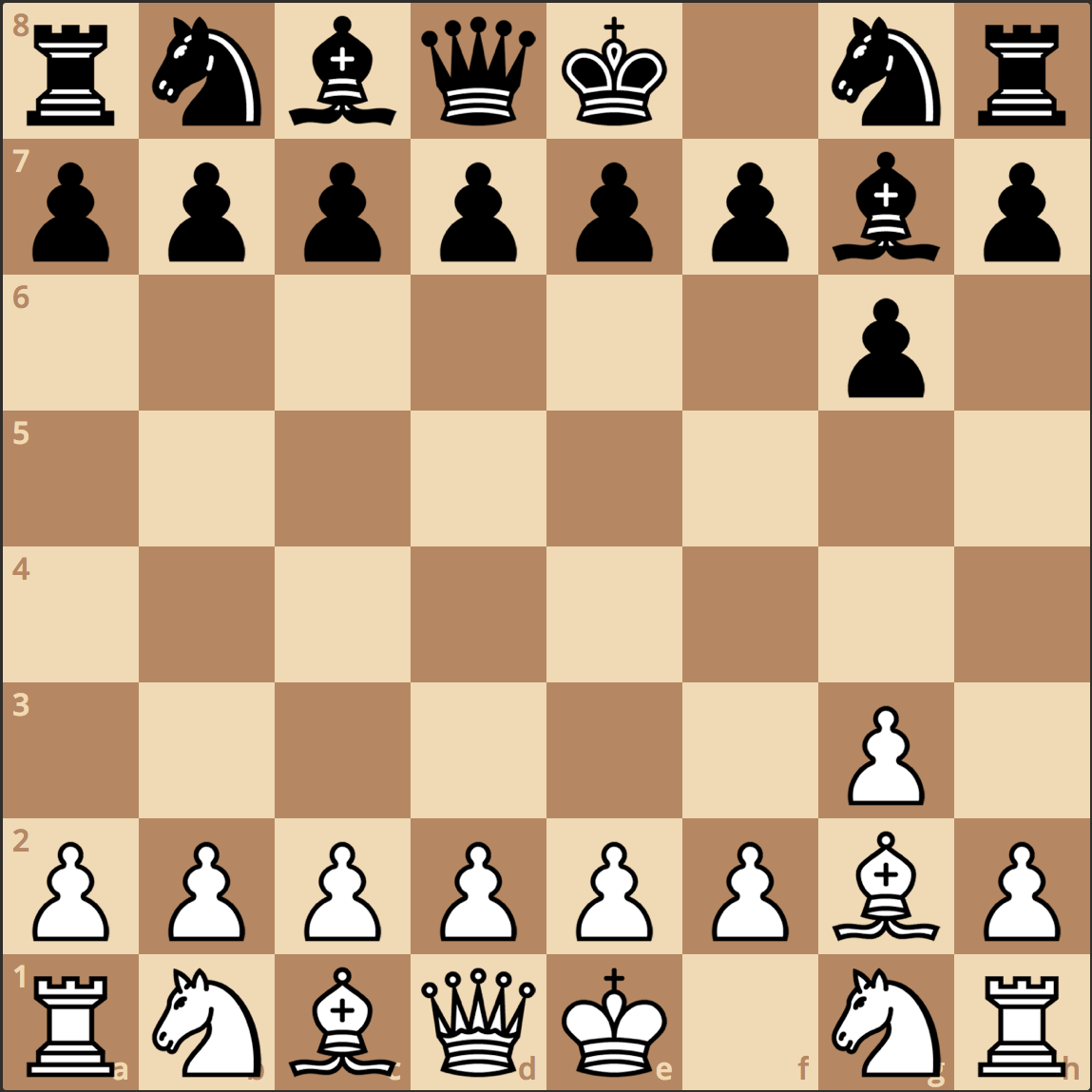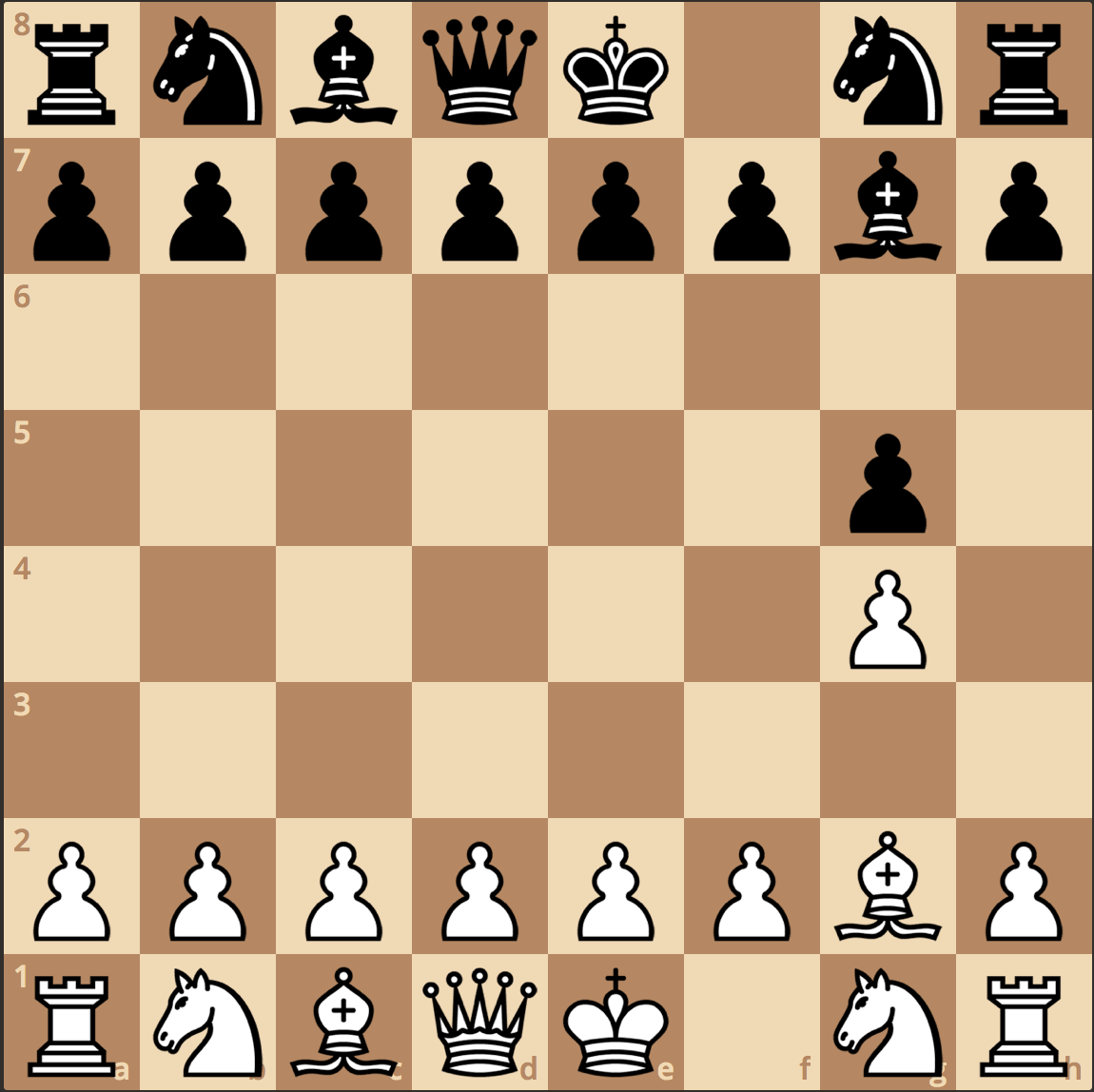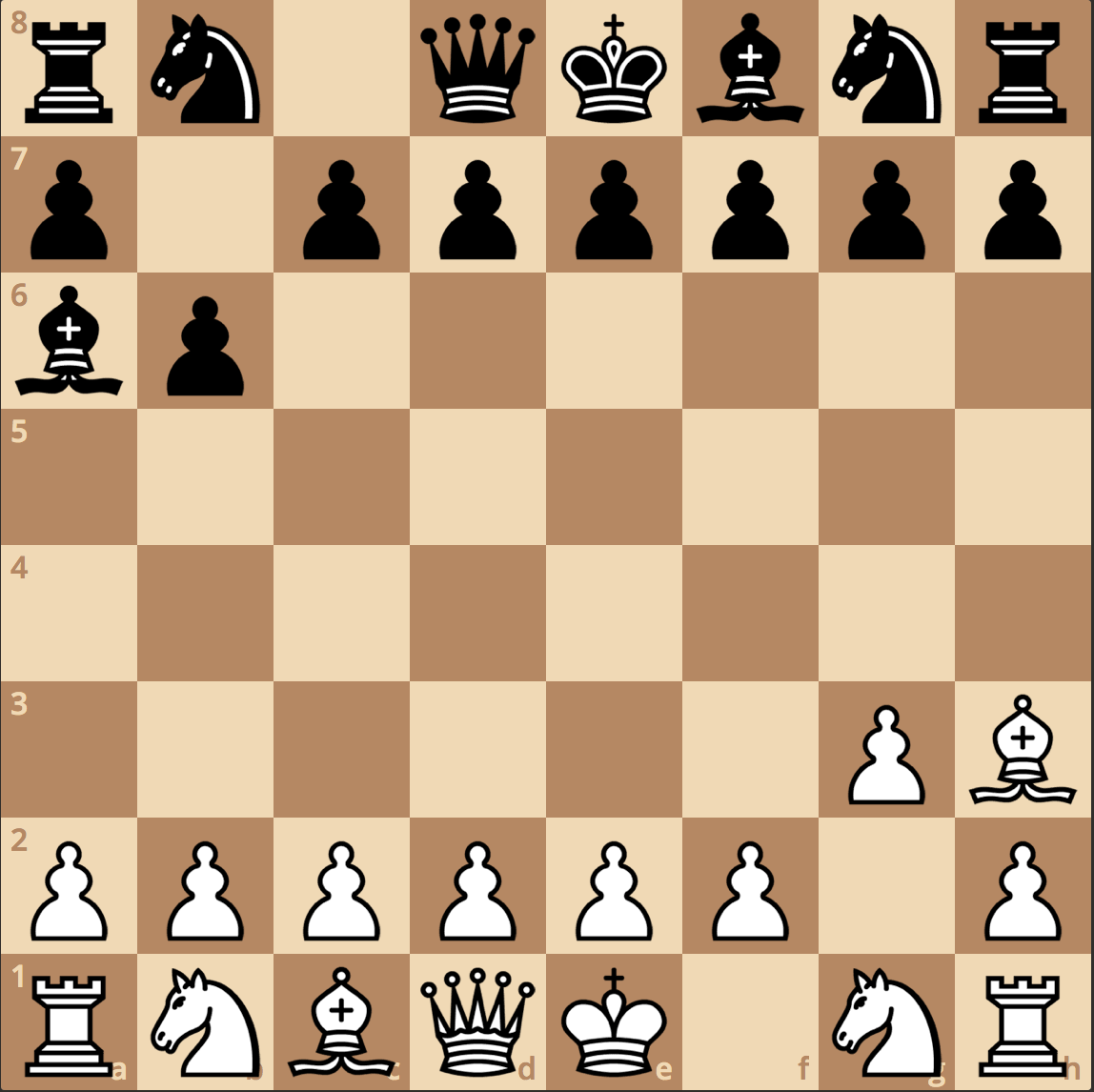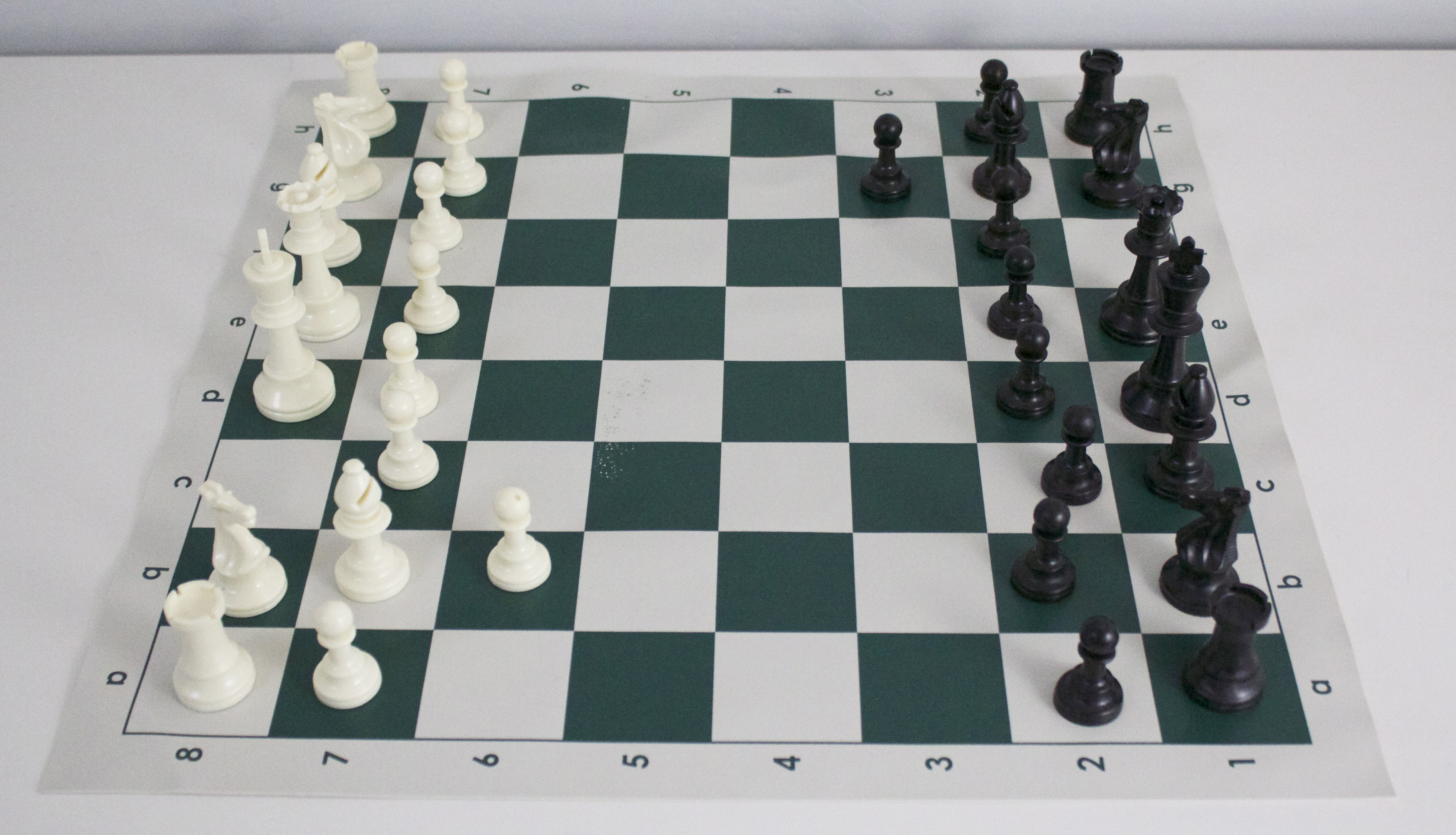Hello readers! Brian here, and today, we are going to talk about the fianchetto in chess. The actual name of the opening is the King’s Fianchetto Opening or Benko’s Opening, but today we are going to talk about the general idea of fianchettoing your bishop(s) in the opening of a chess game. This opening is not as common among beginners in chess, but is used by more advanced players like titled players. The idea is rather simple, but can get a little complicated because of the fact that this opening leads to closed positions. An example is that if you fianchetto your bishop and put it on the second rank (for White) and/or the seventh rank (for Black), it should be noted that you should not trade the fianchettoed bishop, as the square the bishop was occupying will become weak. The most common types of fianchetto are seen in the Sicilian Dragon Variation, The Pirc’s Defense, The Benoni Defence, Benko Opening, and many more. Most, if not all, strong grandmasters have used this opening at some point during their career.
The opening starts as follows: 1. g3 (The King’s Fianchetto Opening), 1. b3 (Larsen’s opening, which is also ‘Queenside Fianchetto’)
- The concept of fianchettoing is to place the bishop on the second or seventh rank to control a long diagonal. It can be advantageous in closed or semi-closed games because it allows the bishop(s) to be more active.
- It can provide an attacking opportunity to the opposing player if he/she decides to try to remove that bishop by either trading, or marching down their pawn (if you fianchettoed queenside), or h pawn (if you fianchettoed kingside). The point of the pawn march is often to trade off the pawn in front of the bishop. It is worth noting that a common chess pattern is when your opponent is pawn marching either the A or H pawn, (This example is if you are playing the White pieces, and you fianchettoed kingside);you can push your H pawn one square forward (h3), then if the opponent’s H pawn makes it to threaten to trade the G pawn, you can play g4 with support of h3. That makes the position closed, and keeps the fianchettoed bishop safe.
- If you do decide to fianchetto, you should NOT trade off the fianchettoed bishop, as it makes the square the bishop was previously on exposed and vulnerable.
- There are three types of fianchetto: The normal fianchetto; long fianchetto, where the knight pawn has moved two squares forward, (b4, g4, b6, or g6); and extended fianchetto (Ba3, Bh3, Ba6, Bh6)
- Pronounced: fēənˈCHetō,-ˈketō , fee-un-che-do

- The normal fianchetto is either b3 then Bb2, g3 then Bg2, g6 then Bg7, or b6 then Bb7.
- This often leads to a rather boring game (in my perspective) because it is closed and more pieces are maneuvering rather attacking. These games also tend to last longer.
- It is not classified with an ECO code, as it itself is not an opening, but rather transpiring to other openings, it is A00.
- While it was not the most popular first move compared to e4, d4, or Nf3, it was used famously when Richard Reti played it a few times at the Baden-Baden tournament in 1925 with mixed outcomes. It got a little bit of attention after GM Pal Benko used it to beat legendary players Bobby Fischer and Mikhail Tal in the 1962 Candidates Tournament.
- I personally think this is good to try, though you truly have to dig deep and study it very hard. That is, because it can get very messy very quickly, and give your opponent great attacking chances.

- It goes like this: either b4 then Bb2, g4 then Bg2, b5 then Bb7, or g5 then Bg7.
- It is very rarely played compared to the normal one square pawn move because the normal fianchetto has a more structural pawn structure with the pawns connected. When the pawn moves two squares forward, it tends to seem a bit dislodged.
- I think it could be usefully played if your opponent castles to the side you are going to fianchetto because you can fianchetto long, while also attacking with a pawn storm, which applies more pressure
- I personally dislike this thought of moving the pawn two squares forward. While it does control one diagonal square, it can be captured and that would lead to the bishop being exposed either on the B or G file.

- The Bishop moves out one more square than the normal fianchetto. It moves to either a3, h3, a6, and/or h6
- The point of this fianchetto is to control the f8 square (if Ba3), c8 square (if Bh3), f1 sqaure (if Ba6), and/or the c1 square (if Bh6). The extended fianchetto also prevents your opponent from castling.
- Similar to the normal and long fianchetto, the bishop should not be traded as the square it was on can be weak and potentially be an attacking square.
- I personally dislike this move because it does not develop any piece towards the center. Even though it can prevent your opponent from castling, if it is traded off, you would be in big trouble. The point of the opening game is to develop minor pieces (bishops and knights) and control as much of the center as possible.
My experience “Fianchettoing”
[iframe src=”http://www.chess.com/emboard?id=3095152″ width=”565″ height=”290″ style=”float:middle”]
I played with the White pieces in this game. On move 1, I decided to try to play the “English Opening”, one of the most complicated openings. The reason I wanted to try this is because I wanted to be more unpredictable. On move 4, I decided to play the move g3, which means I am going to place my light colored bishop on g2, fianchettoing it. Also, on move 9, I decided to use the strategy that I had learned, and that I mentioned on my second bullet point. As the game moved on, my opponent played some “passive” moves such as 13..a6 and 18..Qc8 to name a few. As I continued to launch my attack, Black simply did not put its foot down and defend. I took advantaged of it, and eventually won the game. I was up a rook and that proved too much, as experienced chess players should be able to capitalize on that blindfolded. I didn’t learn much, but to keep being aggressive, and create threats!
[iframe src=”http://www.chess.com/emboard?id=3098378″ width=”565″ height=”290″ style=”float:middle”]
I played with the Black pieces in this game. My opponent played 1.d4. That means that this is going to be a closed position game. (Whenever your opponent plays 1.d4, that means that it is going to transpire into a closed game. And whenever it is 1.e4, it will mostly be an open game.) On my second move, I decided to play g6, fianchettoing my bishop to g7. This is called the “KID,” the King’s Indian Defence. Normal developing moves until move 10 when my opponent decided to go with 10.e4. This meant that White was trying to grab a lot of space so I simply decided to capture on d4, to separate the central pawns of my opponent. On move 13, I was surprised at how quickly my opponent was to move his/her pawns in front of the castled king. As I have mentioned previously, making too many moves in front of the castled king can weaken that side. On move 18, I moved my knight to e3 (Nde3) to trade two knights for a rook. Normally, that would be an unfair trade, as two knights are much more powerful in closed positions, but I gained some compensation with an open file. My best move in my opinion was on move 22 when I played Re1 pinning the bishop. That way, my Queen could potentially take on h3. A crucial moment was on move 29 when White played f6+, and I took with the bishop instead of the King. If I played the latter, White could force a perpetual check, and the game would end in a draw. A move later, a Queen trade was offered, and I refused to accept it, because there was something better. I checked White, and after the King moves, I gobble up the pony on c3 with my bishop, and the game is over. My opponent resigned after the check because he or she knew it was coming. A lesson I learned was that you shouldn’t always accept trades of pieces.
That’s all for this post. In the fall, I’m going to take a break and focus on school, but if you want to contact me, you can find me on Chess.com. My username is brfong3 and my email is brfong3@gmail.com. Thanks!





